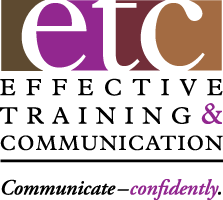Time to add two simple but important punctuation marks to your Workplace Writing Tool Kits:
Quotation Marks
* Use quotation marks to indicate the exact words of a speaker or writer. Always use them in pairs to indicate the beginning and end of a quote. Example
She said to Ann, “The project charter is incomplete. It must be completed.”
* With a long quote – four lines or more – indent the quote and omit the quotation marks.
* Use quotation marks to name a “word,” “expression” or “term.” Example:
The word “megabyte” is often misspelled.
* Use quotation marks to indicate song titles, magazine and newspaper articles and themes. Examples:
The journal featured an article titled, “Exceeding Customer Expectations.”
We launched the “Claims Management System (CMS)” last week.
The Apostrophe
* Use an apostrophe to form a contraction. The apostrophe replaces an omitted letter. Examples
“He can’t (from cannot) make the meeting.”
“She won’t (from will not) approve the changes.”
“I’ve (from I have) worked on the project for a year.”
* Use an apostrophe for possessive nouns. Examples
“She works in the department’s quick response center.”
“The plan determines the project’s time schedule.”
* Add an apostrophe and an “s” to show possession. Examples
“Where is Mr. Jager’s auditing report?”
“I need Ms. Kenny’s approval before I can start.”
“That is my administrative assistant’s folder.”
* For possessive plural nouns ending in “s”, only add an apostrophe. Examples
“Three systems analysts’ terminals were down.”
“Our developers’ requirements are being followed.”
* Use an apostrophe to indicate ownership. Examples
“Martin’s and Wilson’s consulting firms (separate ownership)…”
“Harley and King’s consulting firm (joint ownership)…”
“Last year’s results … ‘
Happy Punctuating!!
